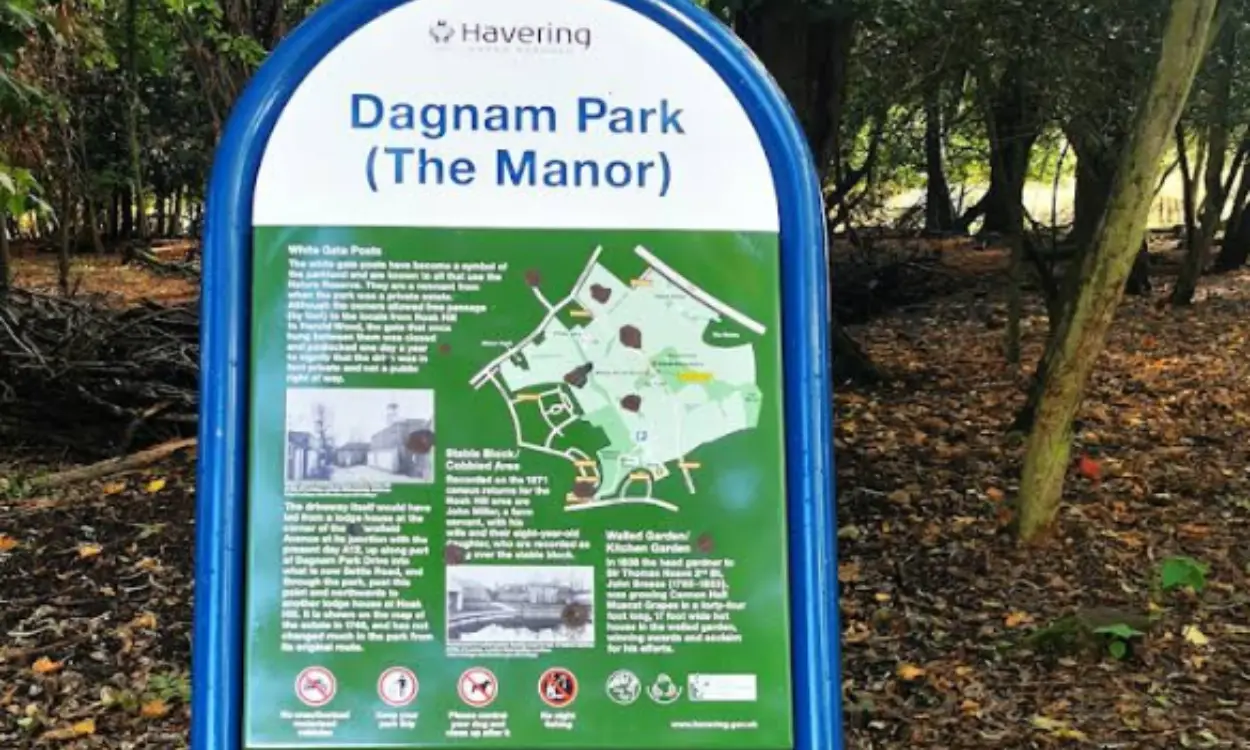Havering (Parliament Politics Magazine) – Dagnam Park in Harold Hill, Havering, was once home to a historic mansion, offering a glimpse into the area’s rich heritage and architectural past.
Originally, the Dagnams estate stood there, including a grand house that was purchased by merchant Richard Neave in 1772.
Famous diarist Samuel Pepys once visited the house, but it was demolished four years after Neave purchased the estate and replaced with a Georgian mansion.
The Dagnams Park estate expanded to 1,600 acres during the course of the following century and was inherited by the Neave family.
The Havering Council claims that the park and gardens were originally designed in the late 17th or early 18th century, but in 1812, renowned landscape gardener Humphry Repton is said to have changed the design.
In his book History of Harold Hill and Noak Hill, historian Brian Lingham described the Dagnams mansion’s three stories and six rooms on each floor.
This comprised the main bedrooms, a schoolroom, a nursery, study spaces, and billiard rooms.
The Neave family had around 40 servants prior to World War I, and the estate farms were the only other source of employment in the region.
According to Havering Council, this ensured that the Neaves were still well-liked and significant members of the village even after the farms were sold in 1919.
The Neaves family stayed in Dagnams into the 1940s, despite the fact that several of the properties were sold following the war.
Following an agreement to sell it to London County Council (LCC), a compulsory purchase order for the remaining land—which would eventually become the LCC Harold Hill estate—was issued in 1946.
The mansion was demolished in 1950 when the LCC, which had intended to save it, declared it could not find any purpose for the structure.
The floor of the stables, fence posts, and a few foundations are the only remaining traces of Dagnams’ location in the park; however, Harold Hill street names honor the family and their home.
How did the Harold Hill estate development affect the park?
The estate was built on much of the original Dagnam Park grounds after the London County Council (LCC) purchased 850 acres of the land in 1947 due to urgent post-World War II housing needs in London.
Despite Dagnam House being recommended for preservation for its architectural and historical value, the house was demolished in the 1950s after wartime damage and deterioration.
The LCC developed Harold Hill as a “new-style suburb” between 1948 and 1958, constructing 7,631 permanent homes for approximately 25,000 people. The estate development converted parkland, woodland, and farmland into residential areas, although large sections of parkland were retained both centrally and on the edges.


